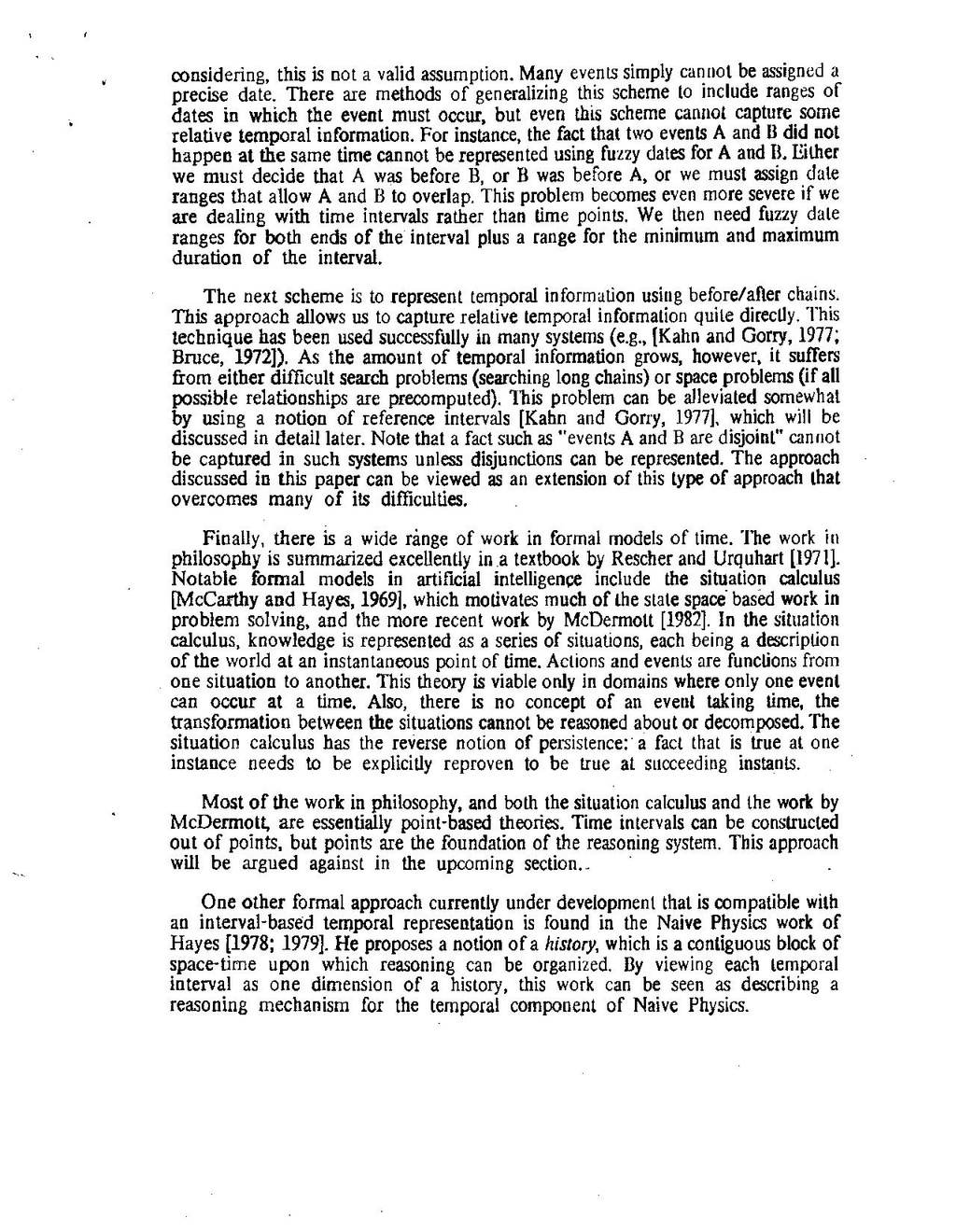considering, this is not a valid assumption. precise date. There are methods of generalizing this scheme to include ranges of dates in which the event must occur, but even this scheme cannot capture some relative temporal information. For instance, the fact that two events A and B did not happen at the same time cannot be represented using fuzzy dates for A and B. Lither we must decide that A was before B, or B was before A, or we must assign dale ranges that allow A and B to overlap. This problem becomes even more severe if we are dealing with time intervals rather than time points. We then need fuzzy dale ranges for both ends of the interval plus a range for the minimum and maximum duration of the interval.
The next scheme is to represent temporal information using before/after chains. This approach allows us to capture relative temporal information quite directly. This technique has been used successfully in many systems (e.g., [Kahn and Gorry, 1977; Bruce, 1972]). As the amount of temporal information grows, however, it suffers from either difficult search problems (searching long chains) or space problems (if all possible relationships are precomputed). This problem can be alleviated somewhat by using a notion of reference intervals [Kahn and Gorry, 1977], which will be discussed in detail later. Note that a fact such as "events A and B are disjoint" cannot be captured in such systems unless disjunctions can be represented. The approach discussed in this paper can be viewed as an extension of this type of approach that overcomes many of its difficulties.
Finally, there is a wide range of work in formal models of time. The work in philosophy is summarized excellently in a textbook by Rescher and Urquhart (1971). Notable formal models in artificial intelligence include the situation calculus [McCarthy and Hayes, 1969), which motivates much of the state space based work in problem solving, and the more recent work by McDermott (1982). In the situation calculus, knowledge is represented as a series of situations, each being a description of the world at an instantaneous point of time. Actions and events are functions from one situation to another. This theory is viable only in domains where only one event can occur at a time. Also, there is no concept of an event taking time, the transformation between the situations cannot be reasoned about or decomposed. The situation calculus has the reverse notion of persistence: a fact that is true at one instance needs to be explicitly reproven to be true at succeeding instants.
Most of the work in philosophy, and both the situation calculus and the work by McDermott, are essentially point-based theories. Time intervals can be constructed out of points, but points are the foundation of the reasoning system. This approach will be argued against in the upcoming section..
One other formal approach currently under development that is compatible with an interval-based temporal representation is found in the Naive Physics work of Hayes (1978; 1979). He proposes a notion of a history, which is a contiguous block of space-time upon which reasoning can be organized. By viewing each lemporal interval as one dimension of a history, this work can be seen as describing a reasoning mechanism for the temporal component of Naive Physics.
